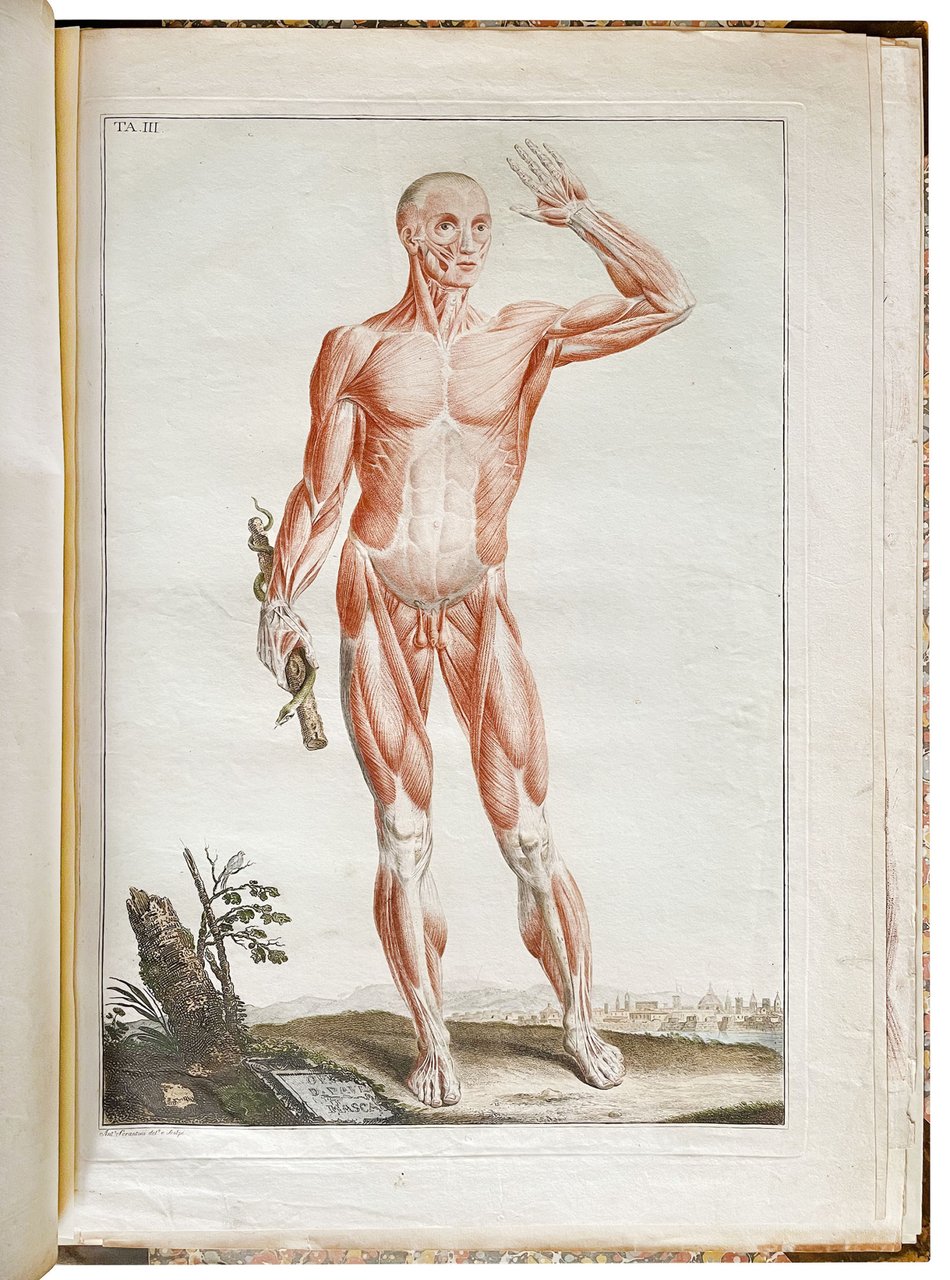
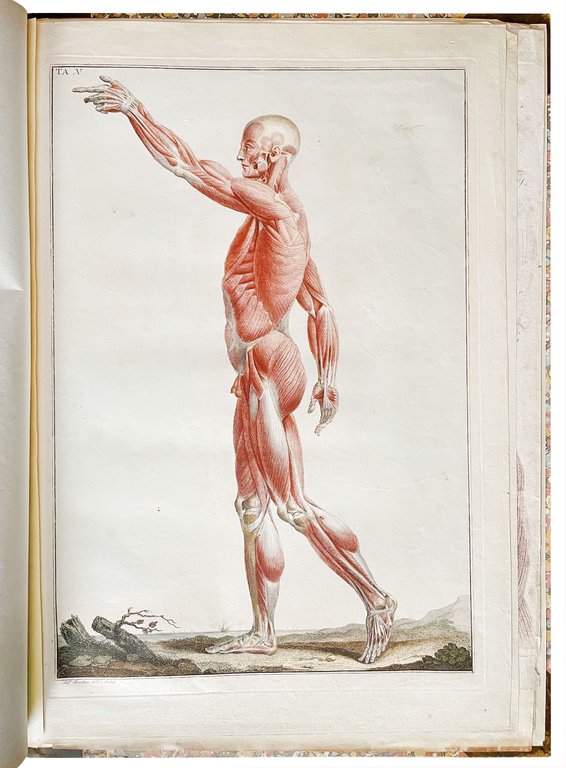
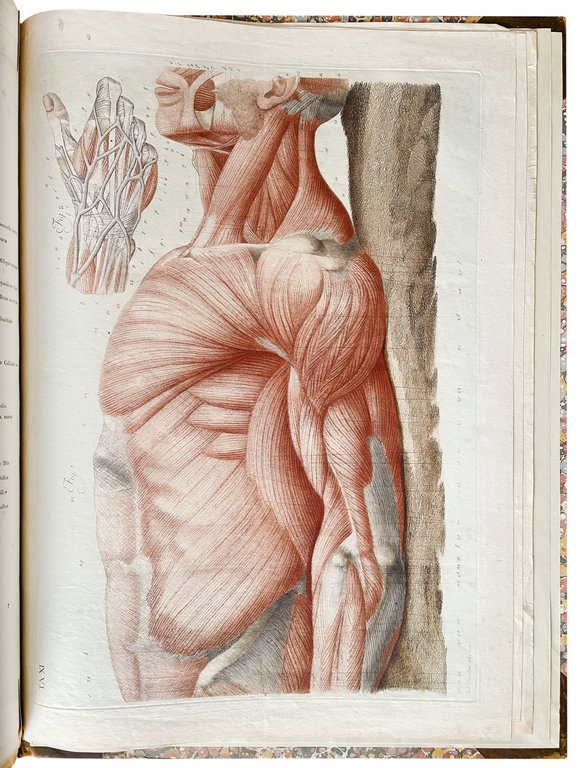
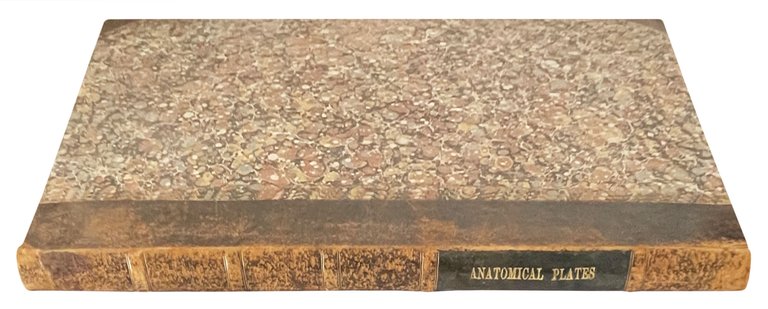
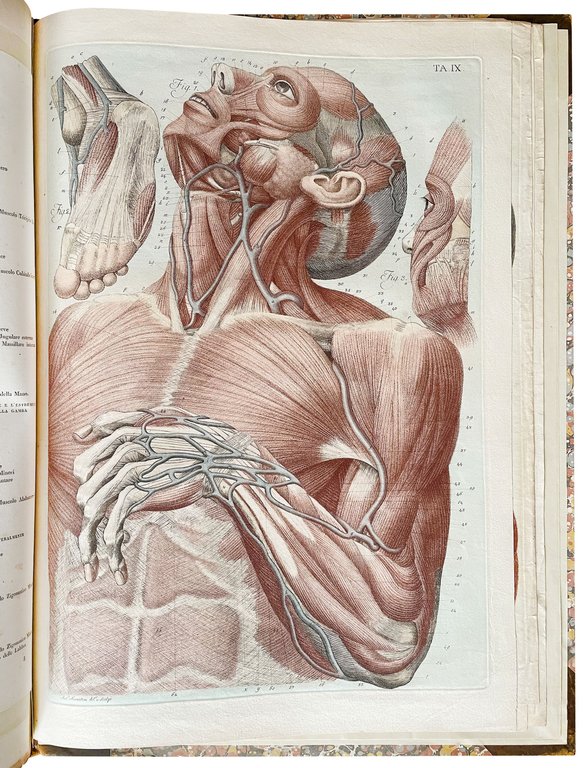
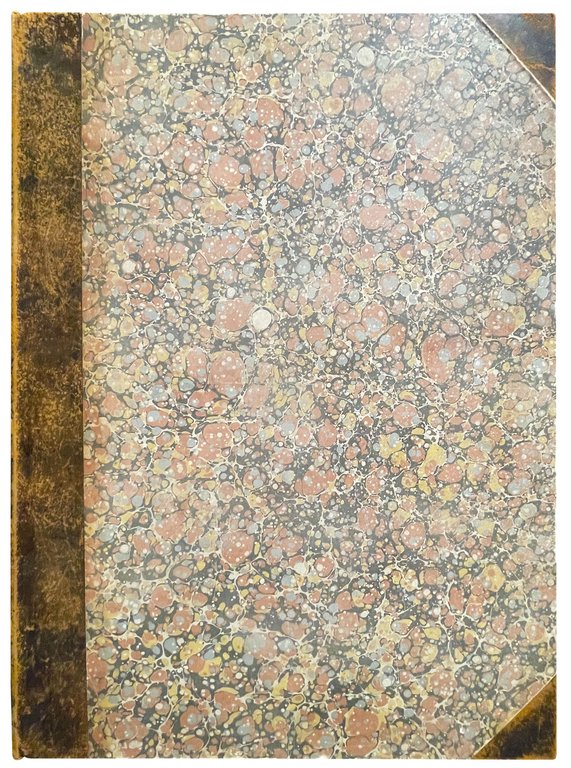
Libri antichi e moderni
MASCAGNI, Paolo (1755-1815)
Anatomical atlas to "Anatomia per uso degli studiosi di scultura e pittura. Opera postuma di Paolo Mascagni"
Giovanni Marenigh for the heirs of the author, 1816
4500,00 €
Govi Libreria Antiquaria
(Modena, Italia)
Le corrette spese di spedizione vengono calcolate una volta inserito l’indirizzo di spedizione durante la creazione dell’ordine. A discrezione del Venditore sono disponibili una o più modalità di consegna: Standard, Express, Economy, Ritiro in negozio.
Condizioni di spedizione della Libreria:
Per prodotti con prezzo superiore a 300€ è possibile richiedere un piano rateale a Maremagnum. È possibile effettuare il pagamento con Carta del Docente, 18App, Pubblica Amministrazione.
I tempi di evasione sono stimati in base ai tempi di spedizione della libreria e di consegna da parte del vettore. In caso di fermo doganale, si potrebbero verificare dei ritardi nella consegna. Gli eventuali oneri doganali sono a carico del destinatario.
Clicca per maggiori informazioniMetodi di Pagamento
- PayPal
- Carta di Credito
- Bonifico Bancario
-
-
Scopri come utilizzare
il tuo bonus Carta del Docente -
Scopri come utilizzare
il tuo bonus 18App
Dettagli
Descrizione
First edition. Mascagni died before he could see three of his manuscripts through to publication. His anatomy for painters and sculptors was posthumously published by his relatives Bernardo and Aurelio Mascagni, and edited by Francesco Antonmarchi, a pupil and anatomical colleague of Mascagni, from Mascagni's manuscripts. The beautiful plates were drawn and engraved by Antonio Serantoni (1780-1837), an artist Mascagni had trained and worked with for fourteen years on his various projected publications, including the monumental Anatomia Universa (Pisa, 1823-1831).
“The first two plates represent front and back views of the skeleton with the ligaments. The names of the bones are engraved directly on the plate. At the bottom is engraved Antonio Serantoni del., Carlo Lasinio diresse, Agostino Costa scu. The remaining thirteen plates contain no words directly on the plate, except the signature of Antonio Serantoni del. e scolpi (who had for fourteen years been Mascagni's anatomic artist). Plates III-V represent front, back, and side views of a muscle-man. Plates VI-XV represent separate parts of the body, such as life-size muscles, bones, and ligaments. The muscles are all engraved in red chalk manner, the rest is colored with the brush. The publication was prepared by Mascagni's prosector, the physician Francesco Antommarchi” (L. Choulant-M. Frank, History and Bibliography of Anatomic Illustration, Cambridge MA, c. 1993, p. 316). The muscle men are in the Vesalian style, with landscape backgrounds.
Paolo Mascagni was born in Pomarance, near Pisa, but he spent his childhood in Castelletto (now Castelletto Mascagni), a small village near Siena, where his father had a house. He attended the faculty of medicine of University of Siena, where P. Tabarrani was his professor of anatomy. He graduated in 1778. A few months later, he was appointed assistant to his master. Following the latter's death in 1780, Mascagni was put in charge of the ordinary chair of anatomy. During those years, he became particularly interested in the lymphatic vessel system. In 1784, he sent a memoir to the Académie des Sciences in Paris, which he later published in Siena under the title Prodrome d'un ouvrage sur le système des vaisseaux lymphatiques. Another major work, the culmination of his research on the subject, was published three years later in Latin as Vasorum lymphaticorum corporis humani historia et ichnographia. Felice Fontana, a friend of Mascagni's, asked him to help prepare some anatomical specimens for the Museum of Physics and Natural History in Florence. After Napoleon's troops arrived in Tuscany, Mascagni experienced several difficult years during which he was arrested multiple times. Nonetheless, in 1801, he was appointed professor of anatomy in Pisa, though he was required to teach his courses in Florence. After 1807, he also taught pictorial anatomy at the Academy of Fine Arts in Florence. In 1811 he became a corresponding member of the Institute of Sciences in Paris. He died suddenly in Castelletto on October 19, 1815. His masterpiece, Anatomia Universa, the first anatomy with life-size figures, appeared posthumously in nine issues between 1823 and 1831 (cf. Choulant-Frank, op. cit., pp. 315-320).
Waller, 6292; Wellcome, IV, p.73; Italian Union Catalogue, IT\ICCU\PUVE\029106.

